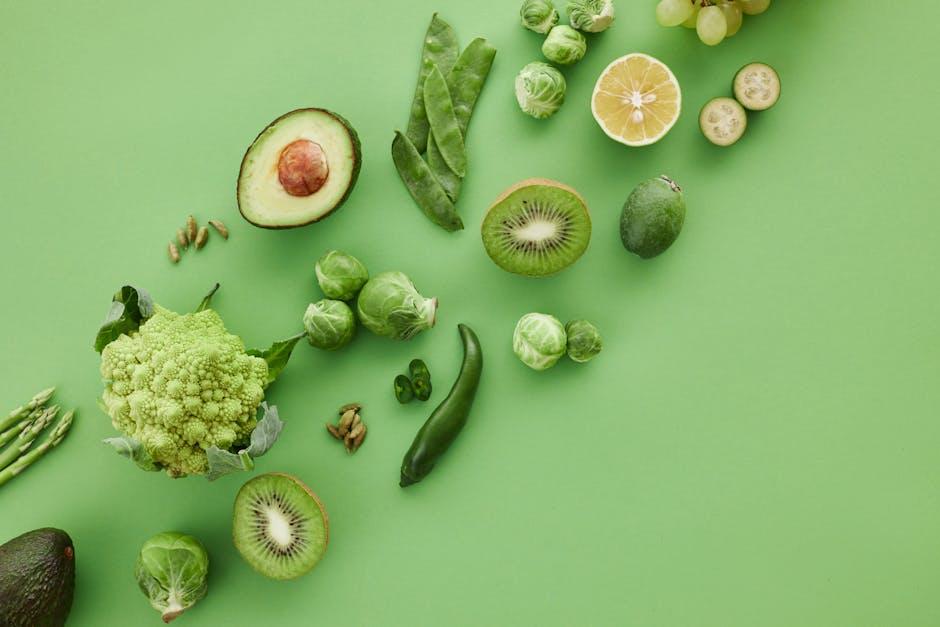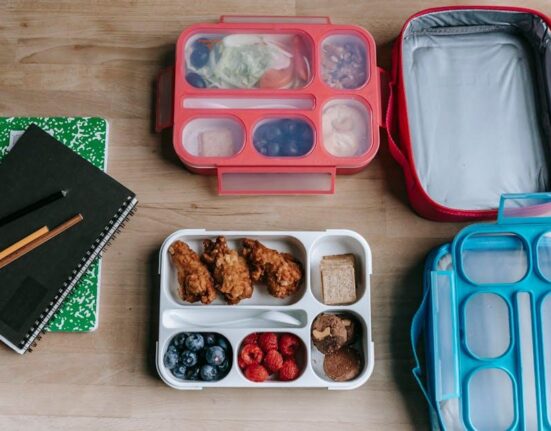Embarking on a keto lifestyle can feel like stepping into a whole new world—a place where fats become friends, carbs take a backseat, and your body learns to burn fuel more efficiently. Whether you’re drawn by the promise of weight loss, increased energy, or mental clarity, starting keto requires more than simply cutting bread from your plate. It’s a transformation that calls for understanding, planning, and patience. In this article, we’ll break down the journey into manageable steps, guiding you through the essentials of transitioning to a ketogenic way of living with clarity and confidence. Ready to dive in? Let’s begin.
Table of Contents
- Understanding the Foundations of the Keto Lifestyle
- Crafting Your Personalized Keto Meal Plan
- Essential Foods to Stock for Keto Success
- Navigating Common Challenges and Staying on Track
- Incorporating Exercise and Monitoring Your Progress
- Q&A
- Final Thoughts

Understanding the Foundations of the Keto Lifestyle
The ketogenic lifestyle revolves around a simple yet powerful nutritional strategy: significantly reducing carbohydrate intake while increasing healthy fats. This metabolic shift encourages the body to enter a state called ketosis, where fat becomes the primary fuel source instead of glucose. Achieving this state promotes steady energy levels and can support weight management along with other health benefits. Understanding these basics empowers you to make informed food choices and embrace a new way of nourishing your body.
At its core, the keto lifestyle emphasizes whole, nutrient-dense foods that align with low-carb macros. Here is a quick guideline to the fundamental components:
- Fats: Avocado, olive oil, nuts, seeds, and fatty fish provide the essential fats needed.
- Proteins: Moderate portions from sources like chicken, beef, eggs, and tofu help maintain muscle mass.
- Carbohydrates: Very limited, focusing on leafy greens and low-carb vegetables like zucchini and cauliflower.
| Macronutrient | Typical % Range | Examples |
|---|---|---|
| Fat | 70-75% | Avocado, Olive Oil, Butter |
| Protein | 20-25% | Chicken, Fish, Eggs |
| Carbohydrates | 5-10% | Leafy Greens, Nuts |

Crafting Your Personalized Keto Meal Plan
Designing a ketogenic meal plan tailored to your personal preferences and lifestyle is essential for long-term success. Start by identifying your favorite low-carb foods and incorporating a variety of healthy fats and moderate proteins. Embrace ingredients like avocado, nuts, seeds, and fatty fish, which not only satisfy hunger but also provide vital nutrients. Planning ahead using meal prepping or batch cooking can save time and keep cravings in check.
Consider balancing your daily macros by aiming for 70-75% fats, 20-25% protein, and 5-10% carbohydrates. Utilize the following quick-reference table to customize your meals effectively:
| Macro | Daily Percentage | Sample Foods |
|---|---|---|
| Fats | 70-75% | Olive oil, butter, coconut oil, avocado |
| Protein | 20-25% | Chicken, beef, eggs, salmon |
| Carbohydrates | 5-10% | Leafy greens, cauliflower, zucchini |
Remember to stay hydrated and listen to your body’s signals. If you experience any discomfort, adjust your fat intake or explore alternative keto-friendly ingredients to maintain nutritional balance and satisfaction.

Essential Foods to Stock for Keto Success
To establish a solid foundation for your keto journey, focus on stocking up with nutrient-dense, low-carb ingredients that fuel your body and keep cravings at bay. Prioritize high-quality fats such as avocado oil, coconut oil, and grass-fed butter, which will be your primary energy sources while on keto. Fresh, low-carb vegetables like spinach, kale, and zucchini bring vital vitamins and fiber, while proteins such as free-range eggs, fatty fish, and pasture-raised meats support muscle maintenance and satiation.
Organizing your pantry with keto-friendly staples allows for quick, convenient meal prep and effortless snacking. Consider keeping these essentials within easy reach:
- Nuts and Seeds: Almonds, chia seeds, and walnuts offer crunchy, nutrient-rich options.
- Cheese: Full-fat varieties like cheddar and mozzarella bring flavor and fat.
- Low-carb Condiments: Mustard, mayonnaise, and coconut aminos enhance dishes without excess carbs.
| Food Category | Examples | Keto Benefit |
|---|---|---|
| Fats | Avocado oil, Olive oil | Primary energy source |
| Proteins | Chicken thighs, Salmon | Muscle support |
| Vegetables | Broccoli, Cauliflower | Low-carb fiber |

Navigating Common Challenges and Staying on Track
Adjusting to a keto lifestyle can come with unforeseen hurdles, such as the infamous “keto flu”, cravings, and social pressures. To combat these challenges, it’s crucial to stay hydrated and replenish electrolytes—especially sodium, potassium, and magnesium. Incorporating bone broth, avocado, and leafy greens into your daily meals can naturally boost your electrolyte intake and ease symptoms. Additionally, creating a solid support system through online communities or local keto groups can keep motivation high and provide practical advice during difficult moments.
Tracking progress beyond just the scale can also help you maintain momentum. Items like improved energy, mental clarity, and better sleep quality are signs of success worth celebrating. Here’s a simple checklist to keep you focused:
- Stay Consistent: Plan meals to avoid last-minute carb temptations.
- Prep Ahead: Batch-cook keto-friendly dishes for busy days.
- Manage Social Situations: Scout menus in advance or bring your own snacks.
- Listen to Your Body: Adjust macros if fatigue or cravings persist.

Incorporating Exercise and Monitoring Your Progress
Embarking on a keto journey isn’t just about adjusting your diet—it’s equally essential to integrate physical activity that complements your body’s new energy source. Low-intensity exercises like walking, yoga, or swimming are great starting points, especially as your metabolism adapts to burning fat for fuel. As you progress, you might incorporate strength training or interval workouts to boost muscle retention and ignite fat loss. Remember, consistency is key; focus on creating a sustainable routine that fits your lifestyle rather than pushing for instant results.
Tracking your progress can be both motivating and insightful. Beyond the scale, consider keeping an eye on factors such as energy levels, sleep quality, and how your clothes fit. Using a simple journal or apps designed for keto can help you record daily food intake, exercise sessions, and any physiological changes. Here’s a quick reference table to help you monitor essential markers effectively:
| Metric | Why It Matters | How to Track |
|---|---|---|
| Weight | Measures fat loss progress | Weekly weigh-ins |
| Ketone Levels | Confirms state of ketosis | Urine strips or blood meters |
| Energy & Mood | Reflects adaptation success | Daily journal notes |
| Fitness Performance | Shows physical improvements | Workout logs or apps |
- Celebrate small wins: Every improvement counts and keeps motivation alive.
- Adjust as needed: Your routine and tracking methods should evolve with your goals.
Q&A
Q&A: How to Start a Keto Lifestyle Step-by-Step
Q1: What exactly is the keto lifestyle?
A1: The keto lifestyle revolves around a low-carb, high-fat diet that encourages your body to enter a state called ketosis. In ketosis, your body shifts from burning glucose (sugar) for energy to burning fat, which many find helpful for weight management and mental clarity.
Q2: Why should I consider starting a keto lifestyle?
A2: People choose keto for various reasons—weight loss, improved energy levels, better focus, or managing certain health conditions. It’s a lifestyle that reshapes your relationship with food and fuels your body differently.
Q3: How do I begin the keto lifestyle step-by-step?
A3: Start by reducing your carb intake to about 20-50 grams per day. Increase healthy fats like avocados, nuts, oils, and fatty fish. Moderate your protein consumption. It’s helpful to plan meals in advance, track macros, and stay hydrated.
Q4: What foods should I avoid and what should I eat more of?
A4: Avoid high-carb foods like bread, pasta, rice, sugary snacks, and starchy vegetables. Embrace leafy greens, eggs, meat, cheese, nuts, seeds, and healthy fats. Think of your plate as a palette with fats taking the lead and carbs as the subtle accents.
Q5: How long does it take to enter ketosis?
A5: Typically, your body enters ketosis within 2 to 7 days when you drastically cut carbs. Factors like activity level, metabolism, and previous diet influence timing. Using keto testing strips or meters can help you monitor ketone levels.
Q6: Are there any side effects when starting keto?
A6: Some experience the “keto flu,” featuring fatigue, headache, and irritability as your body adapts. These symptoms usually subside within a week and can be eased by hydration, electrolytes, and gradual carb reduction.
Q7: Can I incorporate exercise into my new keto lifestyle?
A7: Absolutely! Exercise complements the keto lifestyle by boosting fat-burning and overall health. Start with moderate workouts; as your energy stabilizes, you can explore more intense routines.
Q8: How do I maintain the keto lifestyle long-term?
A8: Consistency and flexibility are key. Experiment with new recipes, listen to your body’s signals, and adjust macros as needed. Remember, keto is a lifestyle, not a strict diet — find the balance that works for you.
Q9: Should I consult a healthcare professional before starting keto?
A9: Yes, especially if you have underlying health issues or take medications. A professional can guide you on safe transitions and monitor your progress to ensure the lifestyle supports your health goals.
Starting keto can feel like stepping into a new world of nourishment. With patience and planning, you can unlock the benefits of fat-fueled living—one delicious bite at a time.
Final Thoughts
Embarking on a keto lifestyle is more than just a dietary change; it’s a journey into rediscovering how food fuels your body and mind. By taking it step-by-step, you allow yourself the space to adjust, learn, and thrive without overwhelming pressure. Remember, every small choice counts, and with patience and consistency, keto can become a natural part of your daily rhythm. Whether you’re here for the energy boost, health benefits, or a fresh culinary adventure, the path you start today could lead to a healthier, more vibrant tomorrow. So take that first bite—and let your keto journey begin.













Leave feedback about this